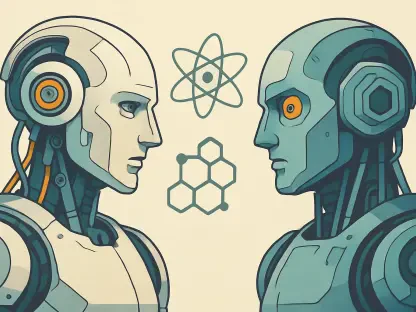Imagine a world where your phone not only answers your questions but anticipates your needs, where medical diagnoses happen faster than a doctor’s appointment, and where traffic jams are dodged before they even form. This isn’t a scene from a futuristic movie—it’s the reality shaped by Artificial Intelligence, or AI, a technology that’s quietly become a cornerstone of modern life. From the voice assistants helping with daily tasks to the algorithms curating content on streaming platforms, AI is everywhere, often working behind the scenes. Yet, for many, it remains a mysterious concept, shrouded in technical jargon or Hollywood exaggerations. The purpose of this guide is to peel back those layers, offering a clear, approachable explanation of what AI is, how it evolved, and why it matters to everyday individuals. No tech degree is needed—just a curiosity about how this powerful tool is changing the way society functions. Let’s step into the world of AI and uncover its impact, step by simple step.
Unpacking the Basics: What AI Really Means
Artificial Intelligence might sound complex, but at its core, it’s about creating computer systems that can perform tasks typically requiring human intelligence, like recognizing speech or solving problems. Unlike humans, these systems don’t feel or think—they process massive amounts of data at lightning speed to spot patterns and make decisions. Today, AI is embedded in tools many use without a second thought, such as virtual assistants like Siri or recommendation engines on platforms like Netflix. The significance for the average person lies in how these innovations streamline daily routines, from setting reminders to personalizing entertainment. However, AI also sparks important debates about ethics and privacy, making it more than just a convenience. Understanding its basic definition helps demystify the technology and prepares anyone to engage with its broader implications in a rapidly changing digital landscape.
Beyond the definition, the relevance of AI extends to how it’s reshaping entire industries and personal interactions. While it excels at efficiency—think automated customer service chatbots or fraud detection in banking—it also raises questions about over-reliance on machines. Could constant use of AI tools dull critical thinking skills? How much personal data is too much to share for the sake of convenience? For those new to the concept, grasping AI’s role starts with recognizing it as a double-edged sword: a helper that saves time but demands awareness of its limits and risks. This balance of benefits and concerns is why even non-tech enthusiasts should care about AI. It’s not just about gadgets; it’s about how society navigates a future where machines play an ever-growing role in decision-making processes across various aspects of life.
Tracing the Roots: The Journey of AI Over Time
The story of AI didn’t begin with modern smartphones or self-driving cars—it stretches back to the 1950s when a pioneering mathematician, Alan Turing, first pondered whether machines could think like humans. His ideas laid the groundwork for what became a formal field of study in 1956, when the term “Artificial Intelligence” was coined at a historic conference. Early efforts focused on basic tasks like playing board games, but limitations in computing power slowed progress for decades. It wasn’t until a landmark moment in 1997, when IBM’s Deep Blue defeated a world chess champion, that AI’s potential truly captured global attention. Since then, leaps in technology and data availability have fueled rapid advancements, bringing AI into mainstream use with applications ranging from language translation to medical diagnostics.
This historical perspective offers more than just a timeline—it shows AI as a product of human ingenuity, built through years of trial and error. For beginners, this context strips away the myth of AI as an overnight phenomenon or an unstoppable force. Instead, it’s a tool shaped by persistent innovation, reflecting society’s drive to solve complex challenges. Looking at this evolution also highlights how far AI has come, from clunky early programs to systems that can predict traffic patterns or assist in surgeries. This backstory matters because it frames AI as a collaborative achievement, not a mysterious entity. For anyone curious about technology’s role in daily life, understanding this journey underscores that AI is less about science fiction and more about practical progress built over generations.
Behind the Curtain: How AI Functions at Its Core
At first glance, AI might seem like magic, but its inner workings boil down to data and clever programming. Essentially, AI systems rely on algorithms—sets of instructions that guide computers to analyze information and make predictions. These systems are fed vast datasets, learning to recognize patterns over time, whether it’s identifying a face in a photo or suggesting a playlist. A key piece of this puzzle is Machine Learning, a subset of AI where systems improve without being explicitly told every step. Even more advanced is Deep Learning, which uses structures mimicking the human brain to handle intricate tasks like voice recognition. The beauty of this process lies in its adaptability—AI refines itself through feedback, getting sharper with each interaction.
Diving deeper, it’s crucial to note that AI’s strength hinges on the quality of data it receives. If the input is flawed or biased, so are the outcomes, which can lead to unfair or incorrect results. Think of AI as a student studying for a test: the better the study material, the better the performance. For those unfamiliar with tech, this analogy simplifies a complex idea—AI isn’t inherently perfect; it’s a tool shaped by what humans provide. This understanding shifts the focus from awe to responsibility, as the technology’s effectiveness depends on careful design and oversight. For everyday users, knowing this basic mechanism demystifies AI, revealing it as a powerful but manageable system that thrives on continuous learning and structured input, not some untouchable force.
AI Around You: Everyday Uses You Might Not Notice
AI isn’t confined to research labs or blockbuster movies—it’s already a seamless part of daily routines for millions. Voice assistants like Alexa or Google Assistant respond to commands, setting alarms or answering quick questions with ease. Navigation apps such as Google Maps use AI to analyze real-time traffic and suggest the fastest routes, saving countless hours. Even social media platforms rely on it to curate feeds, showing content tailored to individual preferences, while online retailers predict and recommend products based on browsing habits. In more critical areas, banks deploy AI to detect fraudulent transactions almost instantly, protecting accounts from unauthorized access. These examples barely scratch the surface but show how deeply embedded AI has become in enhancing convenience.
Beyond personal tools, AI’s influence spans industries like healthcare, where it assists in spotting diseases through imaging analysis, often catching issues earlier than traditional methods. Customer service has also transformed with chatbots handling inquiries around the clock, reducing wait times for simple solutions. For the average person, noticing these applications reveals how AI quietly boosts efficiency in ways that feel almost invisible. Yet, this integration prompts reflection on dependency—how much control is handed over to algorithms? Privacy also emerges as a concern, given the personal data fueling these systems. Recognizing AI in familiar contexts helps ground the technology, making it less abstract and more relevant, while also encouraging a critical eye on its broader societal footprint.
Weighing the Impact: Benefits and Challenges of AI
One of AI’s standout advantages is its ability to process information at speeds and scales unattainable by humans, driving efficiency across countless sectors. From automating mundane tasks in workplaces to providing precise predictions in weather forecasting, AI cuts down on time and cost, often with accuracy that outpaces manual efforts. Its round-the-clock availability ensures services like virtual support or security monitoring never pause, while its scalability handles workloads that would overwhelm human teams. In healthcare, for instance, AI aids in analyzing patient data to predict risks, potentially saving lives through early intervention. These strengths position AI as a transformative force, offering solutions that enhance productivity and open doors to innovation in ways previously unimaginable for many fields.
However, the rise of AI isn’t without significant hurdles that demand attention. Job displacement looms large as automation replaces roles in manufacturing or data entry, sparking debates about economic inequality. Bias in AI systems, often rooted in skewed training data, can lead to unfair outcomes, such as in hiring or policing tools. Privacy remains a pressing issue, as AI’s reliance on personal information raises risks of misuse or breaches. Additionally, security threats grow with the potential for malicious actors to exploit AI systems. Ethical dilemmas also surface, especially in high-stakes areas like military applications or medical decisions. For those new to the topic, these challenges highlight that while AI holds immense promise, its unchecked growth could deepen societal divides, underscoring the need for thoughtful regulation and oversight.
Looking Ahead: Preparing for an AI-Driven Future
As AI continues to evolve, its trajectory points toward automating more complex tasks, moving beyond repetitive work into fields like legal analysis or creative design. The focus is also shifting toward human-AI collaboration, where technology complements human skills rather than replacing them entirely—think of AI as a partner in brainstorming solutions or refining ideas. Ethical development stands as a priority, with growing calls for guidelines to ensure fairness, transparency, and accountability in AI systems. Over the next few years, expect tighter regulations and frameworks to shape how AI integrates into society, balancing innovation with responsibility. This forward-looking view suggests a future where AI’s potential is harnessed without sidelining human values or safety.
For everyday individuals, adapting to this landscape means building skills that AI can’t easily replicate, such as creative problem-solving or emotional intelligence. Staying informed about AI’s basics and keeping up with its developments also helps in navigating its influence, whether in personal tech or workplace changes. Consider exploring free online resources or community discussions to grasp how AI might affect specific industries or daily habits. This proactive approach empowers anyone to engage with the technology, not as a passive user but as an informed participant. While challenges like privacy or job shifts persist, focusing on adaptability and awareness offers a practical path forward. Embracing this mindset ensures that AI becomes a tool for enhancement, not a source of uncertainty, in an ever-changing world.
Reflecting on the Big Picture: Key Takeaways from AI’s Story
Looking back on the exploration of Artificial Intelligence, it’s clear that this technology has emerged as a powerful force, deeply woven into the fabric of modern existence through tools like voice assistants and personalized recommendations. Its journey traced a path from a 1950s concept to a reality that transformed industries, driven by decades of innovation and pivotal moments like AI’s chess victories. The benefits, from unmatched efficiency to life-saving medical insights, stood out, yet so did the risks—bias, privacy concerns, and job displacement demanded careful consideration. Ethical debates and myths about AI’s intentions were tackled, revealing a need for public education. Ultimately, the focus shifted to a future of collaboration and responsibility, where AI’s growth is guided by human values. These insights paved the way for a balanced understanding, equipping everyone to approach AI with both curiosity and caution.









